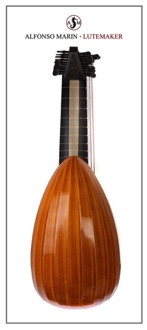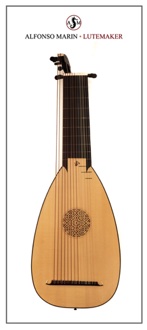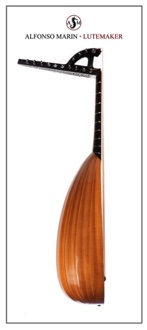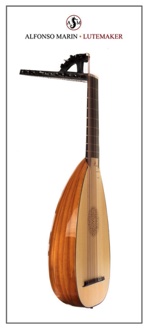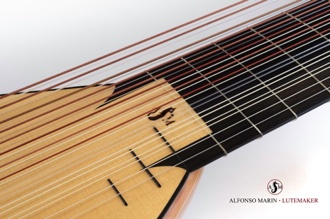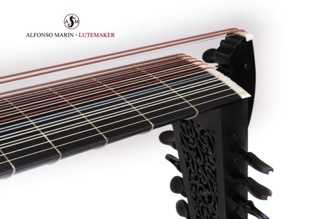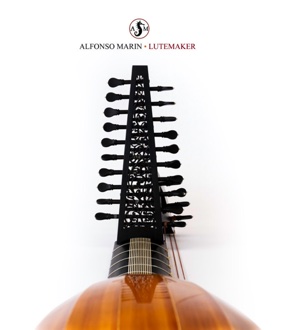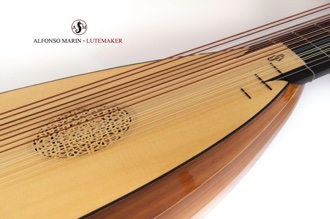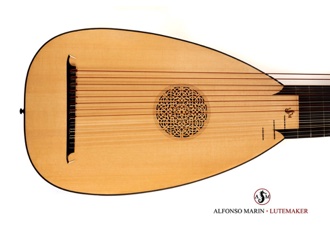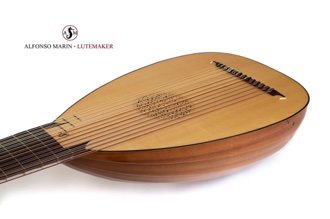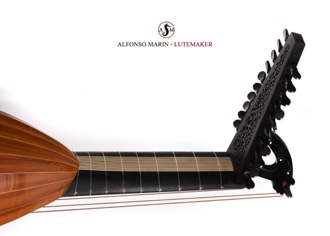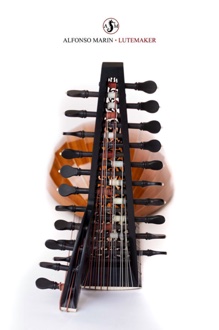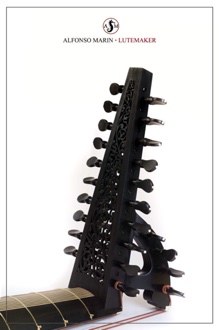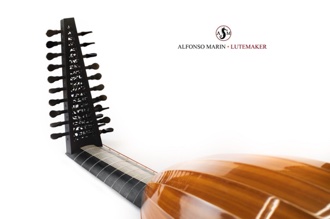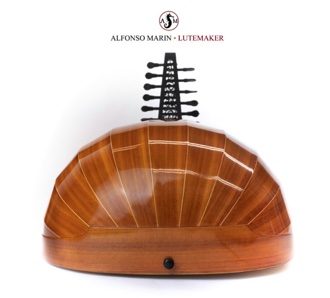1) 11-course lute after Hans Frei (Vienna, Kunsthistorisches Museum C34).
11 ribs of figured sycamore, plum, yew* or pear. Ebony or African blackwood fingerboard with fingerboard points. Ebony half edging. The neck can be either veneer with ebony or solid figured fruitwood.
String length: 67 cm.
With solid neck and pegbox : €5450
With (ebony) veneered neck and pegbox :€5735
•✵•
2) 11-course lute after Hans Frei (Warwick County Museum Nr. 162).
11 ribs of figured sycamore, plum, yew* or pear. Ebony or African blackwood fingerboard with fingerboard points. Ebony half edging. The neck can be either veneer with ebony or solid figured fruitwood.
String length: 69.5 cm.
With solid neck and pegbox : €5450
With (ebony) veneered neck and pegbox :€5735.
•✵•
3) 11-course lute after Laux Maler (Nürnberg, Germanisches Nationalmuseum MI54)
A similar instrument to No. 2 above with a shallower body that might be more comfortable to hold for some players.
9 ribs of figured sycamore, plum, yew* or pear. Ebony or African blackwood fingerboard with fingerboard points. Ebony half edging. The neck can be either veneer with ebony or solid figured fruitwood.
String length: 68 cm.
With solid neck and pegbox : €5450
With (ebony) veneered neck and pegbox :€5735.
*Due to the scarcity and high cost of yew wood suitable for lute ribs, instruments made with this timber will have a €230 increase over the prices quoted above.
11- and 13-course lutes can be ordered with a pierced and carved pegbox back at 625 euros extra and with an inlaid fingerboard at 785 euros extra.
'Swan neck' 13-course lutes
13-course lutes (bass rider)
1) 13-course lute after Hans Frei (Warwick County Museum Nr. 162).
11 ribs of figured sycamore, plum, yew* or pear. Ebony or African blackwood fingerboard with fingerboard points. Ebony half edging. The neck can be either veneer with ebony or solid figured fruitwood.
String length: 69.5 - 75cm.
With solid neck and pegbox : €5820
With (ebony) veneered neck and pegbox :€6175.
•✵•
1) 13-course lute after J.C. Hoffmann 1730 (Brussels Musical Instruments Museum No. 3188).
11 ribs of figured sycamore, plum, yew* or pear. Ebony or African blackwood fingerboard with fingerboard points. Ebony half edging. The neck can be either veneer with ebony or solid figured fruitwood.
String length: 69.5 - 75cm.
With solid neck and pegbox : €5820
With (ebony) veneered neck and pegbox :€6175.
*Due to the scarcity and high cost of yew wood suitable for lute ribs, instruments made with this timber will have a €230 increase over the prices quoted above.
11- and 13-course lutes can be ordered with a pierced and carved pegbox back at 625 euros extra and with an inlaid fingerboard at 785 euros extra.
In the early XVIII century, German and Bohemian composers began to create a rich body of music for the 13-course lute that became one of the most idiomatic ever written for the instrument. Although the great Sylvius Leopold Weiss is the best known and probably the best composer for this type of lute, we must not forget that there is also excellent music in large numbers by other, lesser known composers.
The Hoffmann lute offered here was originally built as a 13-course instrument. The Frei was almost certainly originally built as a 6-course lute and then converted into an 11-course instrument. In the XVIII century, many 11-course lutes were reconverted into 13-course instruments by adding a bass rider to accommodate the two additional courses. This means that some lutes were in use for more than 200 years!
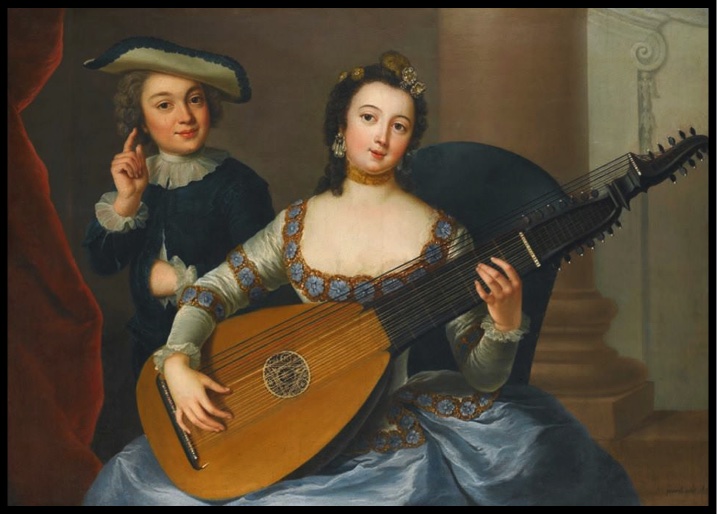
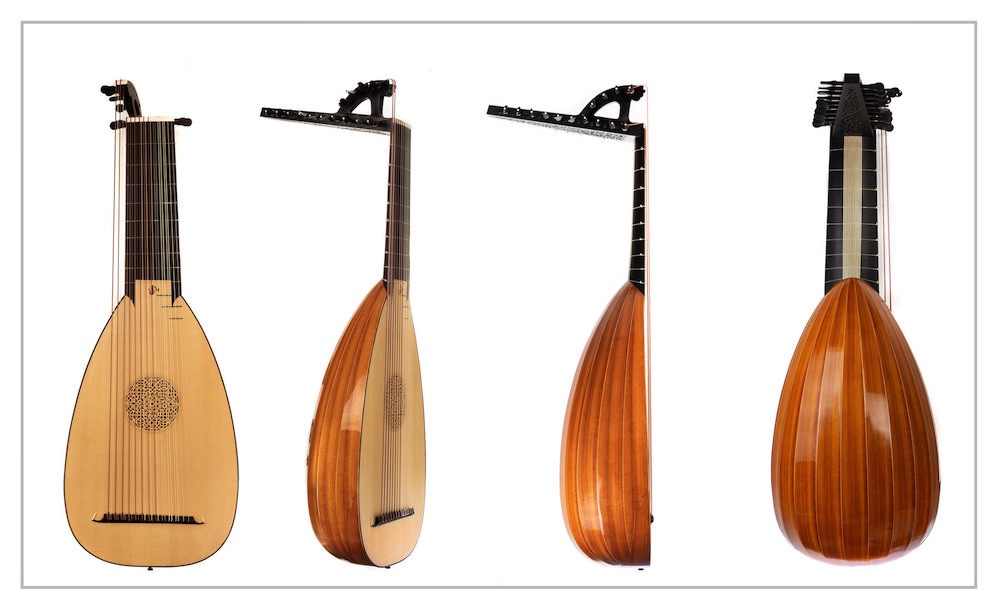
A recently built quilted maple 13-course lute with bass rider Warwick Frei.
An example of the Hans Frei above (No.1 ) built as a 10-course instrument.
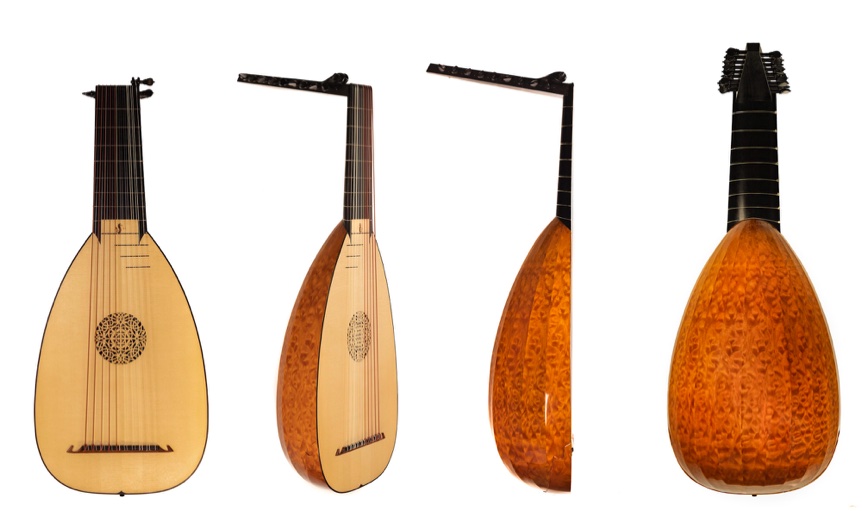
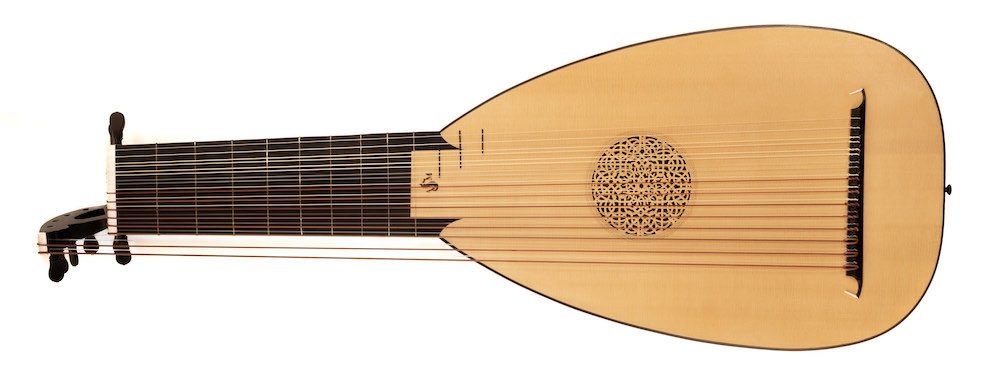
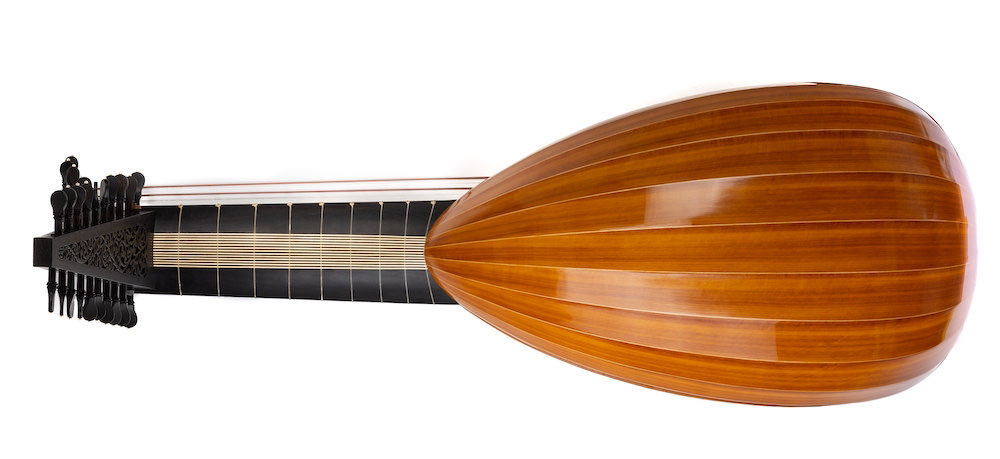
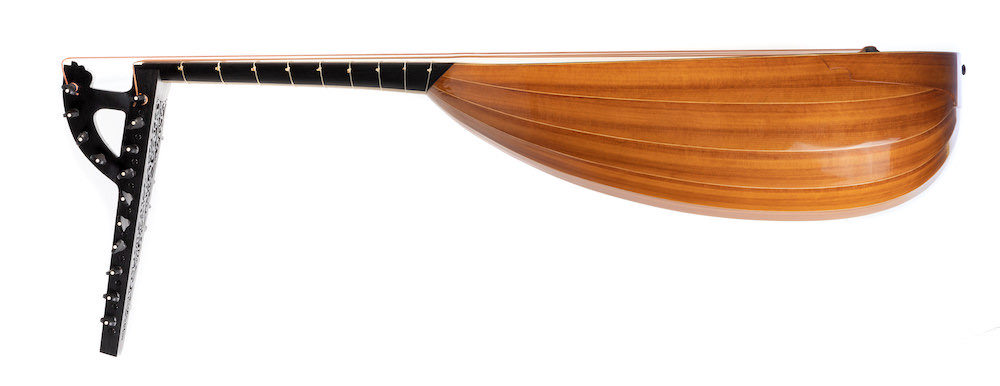

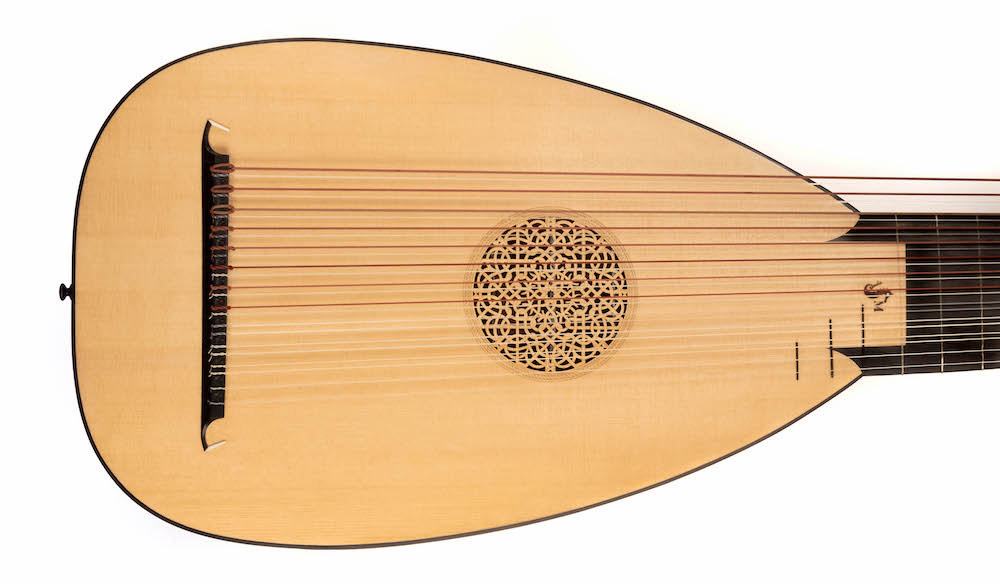
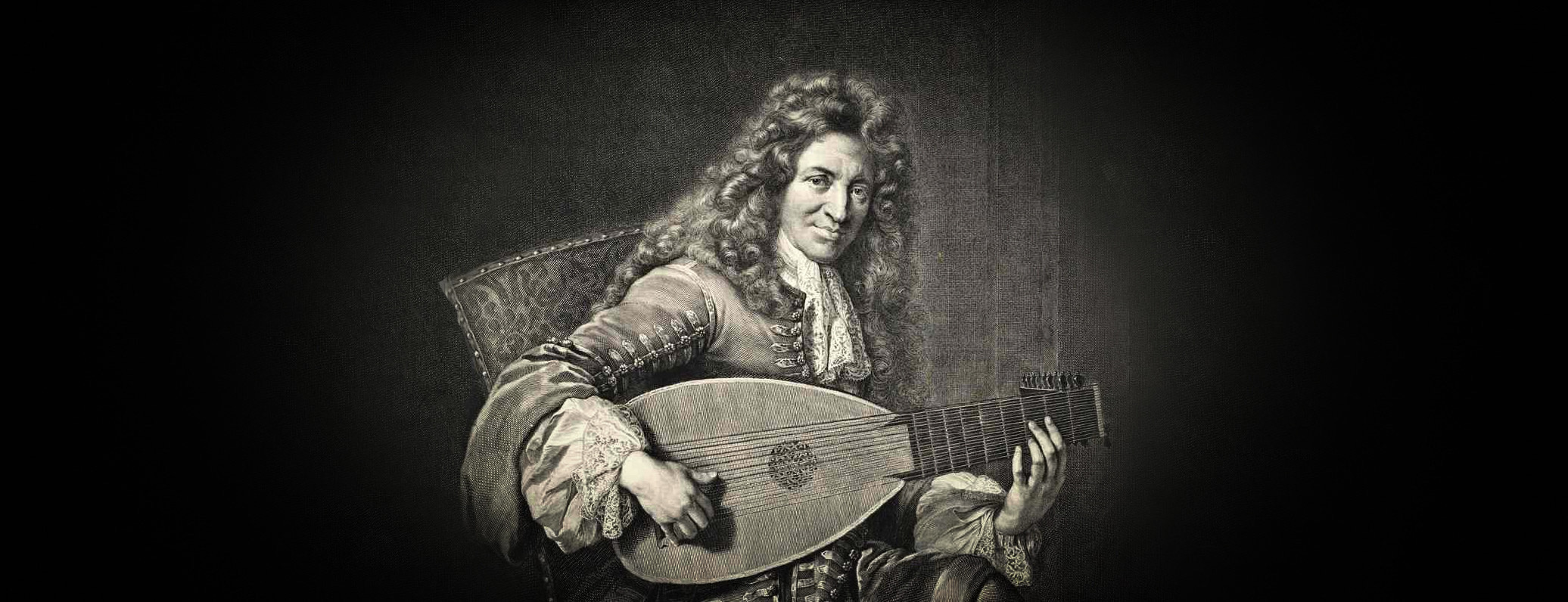
11-course lutes
After J.C. Hoffmann 1730 (Brussels Musical Instruments Museum No. 3188).
€6900.
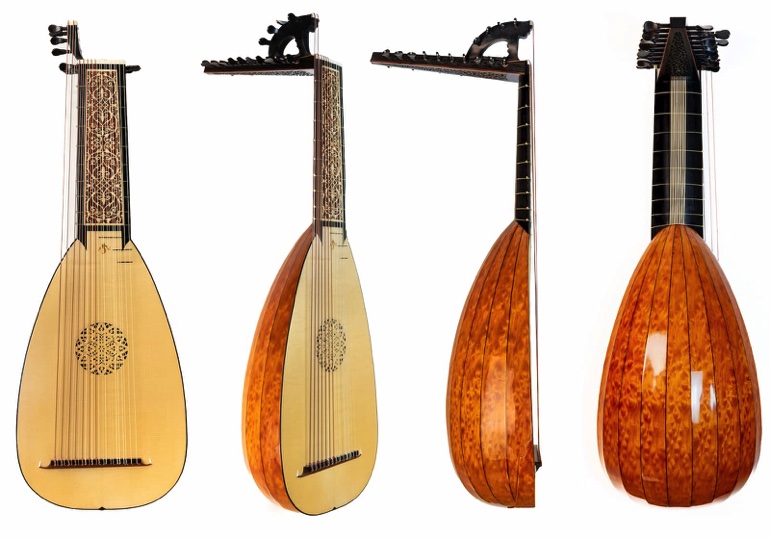
Another version of the same instrument in yew.
The development of the 11-course lute was inextricably linked to French ideas and fashion. French composers of the XVIIth century embarked on a journey that departed from the traditional use of the lute, which emphasized polyphonic voice leading and counterpoint, towards a more idiomatic and freer style, wherein resonance, tone, expressiveness, and rhythmic freedom were the primary objectives.
With this objective in mind, they began experimenting with alternative tunings (cordes avalées), searching for a more resonance by using extensive use of open strings to encourage the natural resonance of the lute. This, together with the use of lutes with longer strings and the additional course, contributed to the development of the new style that eventually became known as style brisé.
We have many original lutes that are preserved in museums all over the world as 11-course lutes. This is probably because most 10-course lutes were converted into 11-course lutes by adding a treble rider and using a single 2nd course. This gave the two additional pegs that made the extra course possible. This is the reason why the 11th course "hangs" outside the fingerboard on many of these instruments.

